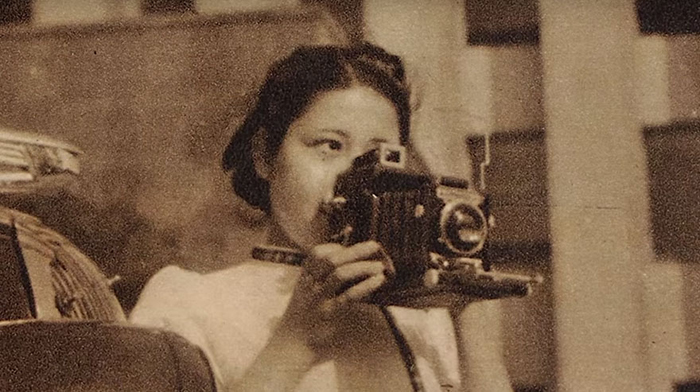For many Open Culture readers, the Halloween season offers an opportunity — not to say an excuse — to re-experience classic horror films: F.W. Murnau’s Nosferatu from 1922, for instance, or even George Méliès The Haunted Castle, which launched the whole form in 1896. This year, may we suggest a home screening of the formidable work of vintage cinema that is 1968’s The Astro Zombies? Written, produced, and directed by Ted Mikels — auteur of The Corpse Grinders and Blood Orgy of the She-Devils — it features not just “a mad astro-scientist” played by John Carradine and “two gore-crazed, solar-powered killer robot zombies,” but “a bloody trail of girl-next-door victims; Chinese communist spies; deadly Mexican secret agents led by the insanely voluptuous Tura Satana” and an “intrepid CIA agent” on the case of it all.
You can watch The Astro Zombies for free, and newly remastered in HD to boot, at Kino Cult, the new streaming site from film and video distributor Kino Lorber. Pull up the front page and you’ll be treated to a wealth of titillating viewing options of a variety of eras and subgenres: “Drive-in favorites” like Ape and Beware! The Blob; “golden age exploitation” like Reefer Madness and She Shoulda Said ‘No’!; and even classics like Fritz Lang’s Metropolis and Stanley Kubrick’s Fear and Desire.
True cult-film enthusiasts, of course, may well go straight to the available selections, thoughtfully grouped together, from “Master of Italian Horror” Mario Bava and prolific Spanish “B‑movie” kingpin Jesús Franco. Those looking to throw a fright night might consider Kino Cult’s offerings filed under “hardboiled horror”: Killbillies, The House with 100 Eyes, Bunny: The Killer Thing.
Few of these pictures skimp on the grotesque; fewer still skimp on the humor, a necessary ingredient in even the most harrowing horror movies. Far from a pile of cynical hackwork, Kino Cult’s library has clearly been curated with an eye toward films that, although for the most part produced inexpensively and with unrelenting intent to provoke visceral reactions in their audiences, are hardly without interest to serious cinephiles. The site even includes an “artsploitation” section containing such taboo-breaching works as Curtis Burz’s Summer House. Among its general recent additions you’ll also find Dogtooth by Yorgos Lanthimos, perhaps the most daring high-profile provocateur currently at work in the medium. Since Kino Cult has made all these films and more available to stream at no charge, none of us, no matter our particular cinematic sensibilities, has an excuse to pass this Halloween un-entertained — and more to the point, undisturbed. Enter the collection here.
Related Content:
4,000+ Free Movies Online: Great Classics, Indies, Noir, Westerns, Documentaries & MoreThe First Horror Film, George Méliès’ The Haunted Castle (1896)
Watch Nosferatu, the Seminal Vampire Film, Free Online (1922)
Martin Scorsese Creates a List of the 11 Scariest Horror Films
Stephen King’s 22 Favorite Movies: Full of Horror & Suspense
Based in Seoul, Colin Marshall writes and broadcasts on cities, language, and culture. His projects include the Substack newsletter Books on Cities, the book The Stateless City: a Walk through 21st-Century Los Angeles and the video series The City in Cinema. Follow him on Twitter at @colinmarshall or on Facebook.








